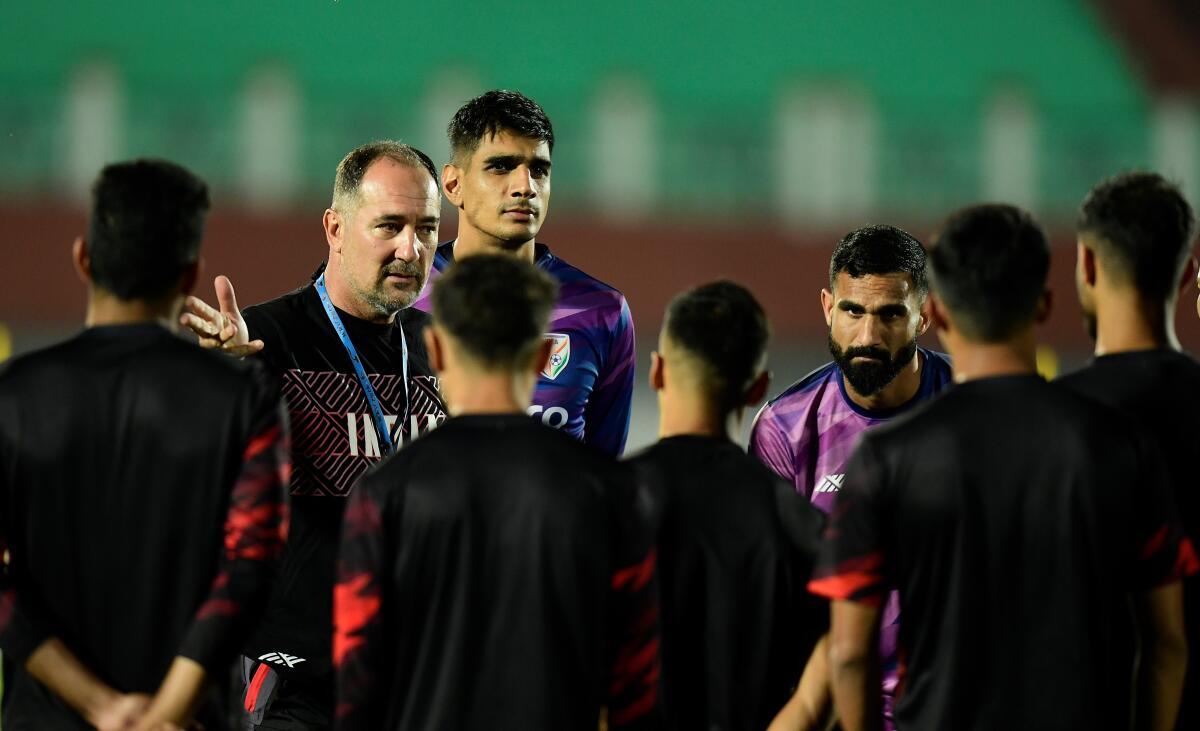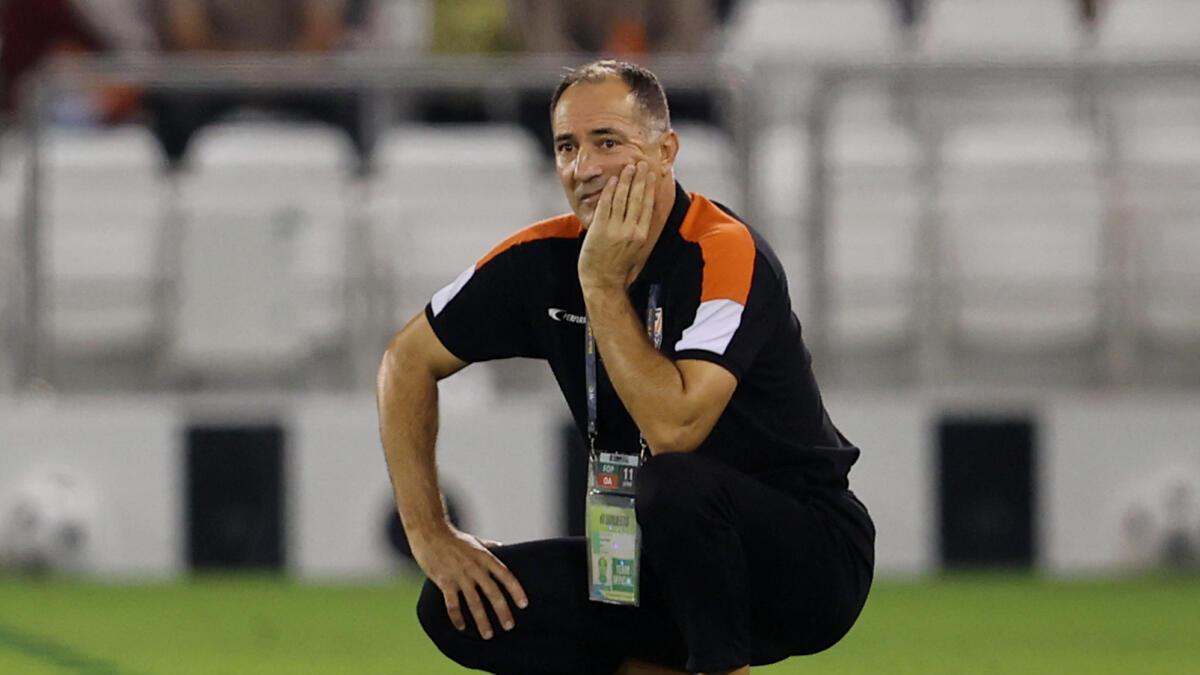Igor Stimac sacked as snooze button is hit on Indian football – A recap of the Croatian’s tumultous tenure
Igor Stimac talked the talk. There was a lot of talking in the last five years, however, he and his team rarely walked it. When he came in through the doors in 2019, he tried to kick and awaken the ‘sleeping giant’, he was drawn in by. At the start of 2024, he was optimistic, noting India is finally “out of its slumber” but as he exits the stage, it appears the snooze button is once again hit on Indian football.
His time will be remembered for all the promises he couldn’t deliver. And right until the end, Stimac didn’t appear to keep his word. In March, the Croatian set up his exit plan before the Afghanistan match in Guwahati, saying he would walk away if the team failed to make the third round of the qualifier. During the defeat the following night, the Indian supporters let him know that it was time go but he held on. He vowed he would prove the critics wrong and that the football would improve in June after a longer camp.
He got his wish with the longer camp but his team floundered once again with the final nail being the controversial 1-2 loss to an experimental Qatar side filled with U-23 players. After the loss, it emerged that Stimac might not go through on his oath of stepping down from his role, with two years left on his deal. The writing was on the wall, though, when the All India Football Federation (AIFF) chief Kalyan Chaubey promoted an interview on the federation’s official channel calling out Stimac’s excuses, marking another shambolic episode for the sport in the country.

On Monday night, the AIFF gave him the marching orders, when it decided to terminate his contract, pointing to the ‘disappointing outcome’ of the World Cup qualifiers – the second such failure under Stimac. The Croatian’s tenure ends with a 35.8 win per cent rate in 53 matches, with just one win against teams ranked above it. Stimac had more red cards in one month during this time. One wonders how things would have turned out if not for Sunil Chhetri and his goals.
In 2019, when the Croatian came in, he promised enterprising football and to move away from Stephen Constantine’s “defensive football” as he called it, hoping to elevate the Indian football ceiling on the international stage. “This is new India,” he said after salvaging a 1-1 draw against a lowly-ranked Bangladesh at home. For all the optimism he painted, it was the defensive football in the goalless draw away to Asian champions Qatar in 2019 which stood out as the highlight in the first half of Stimac’s reign, which was abrupted by the Covid-19 pandemic break.
He gradually phased out players from the Constantine era and pinned his hopes on the 2017 U-17 World Cup batch to form the core of the Indian team for the next decade. Eight of the 21 were handed senior debuts with the likes of Anwar Ali, Jeakson Singh and Lalengmawia Ralte being key to implementing his philosophy.
There were glimpses of the brave possession-based, quick-passing football, which was easy on the eye. Like the Nikhil Poojary backheel nutmeg against Lebanon last year which led to a goal, the slick passing move against Iran a few months later in friendly encounters. There was also the Manvir Singh goal at the end of a slick passing move in Kuwait during the World Cup qualifier.
However, when the stakes were raised, the players froze. When it didn’t come off, the football was an eyesore. Like in Kolkata in front of 60,000+ fans during Chhetri’s farewell this month, against Afghanistan both home and away, against Bangladesh in Kolkata again in 2019 and also the Asian Cup.
Nobody expected India to make the World Cup in the Americas, despite it being an expanded 48-team competition. But hopes were high about a possible first-ever third-round progression, especially after the win in the first game over Kuwait in November – a first away win in the qualifiers in 22 years. But the reality check came right after. And every month since.
India has not won a game in 214 days, scored only two more goals – one from the penalty – in the qualifiers, failed to score in the embarrassing Asian Cup run in Qatar which Stimac deemed immaterial before a ball was even kicked, lost to a stitched-together Afghanistan at home, said goodbye to Chhetri and finally lost to an U-23 Qatar.
The high point of Stimac’s reign came in 2023, when his team won three trophies over five months at home, helping in building some much-needed momentum before the ill-fated Asian Games sojourn. India didn’t do enough to earn qualification in the first place, yet Stimac was adamant the Sports Ministry make an exception and the Indian Super League accommodate his request in releasing the players. An ill-prepared, make-shift Indian team lost to a U-24 Saudi Arabian team in the round-of-16 stage.
ALSO READ | Stimac sacked: Full list of Indian football team performances at major tournaments under the Croat
In all these disappointments, Stimac regularly shifted blame onto the players, the referees, the calendar, the lack of longer camps, the federation and the ISL. The Croat also kept falling back on the inability to call upon the Persons of Indian Origin (PIO) and the Overseas Citizens of India (OCI) players. With the shortcut not made available to him, he bemoaned the small group of players to choose from but it can be argued Stimac didn’t look beyond the usual names. Stimac’s regular absence during the ISL and micromanaging from Croatia hadn’t escaped his critics’ attention. In fact, he didn’t attend any of the matches from the recently concluded domestic season.
After the Asian Cup, in a report submitted to the AIFF, Stimac gave a realistic assessment of India’s senior-level international football aspirations. “How can we expect more from our boys if we had never in our history qualified for the Asian Cup in U18/U20/U23?” he asked.
Stimac’s MO suggested that he cared. He said he looked back on the late defeat to Oman in 2019 and “cried a few times”. His posts on X are regularly signed off with “Jai Hind”, then from Croatia, he said his “soul is still there in India” and shared an eight-page ‘culture manifesto’ on what it takes to play for the country. Earlier this month, he told a room packed with Indian journalists that he feels “more Indian than a lot of you”. In four years time, he guaranteed he would take India into the top 80 in FIFA rankings and top 10 in Asia.
But all the ‘Indianness’ wasn’t enough to stop the rot in the last eight months and Stimac’s departure also will not end Indian football’s. As he leaves, India has fallen to 121 in the world rankings and 22nd in Asia.
In the end, Stimac came, he saw, he talked and he left.


